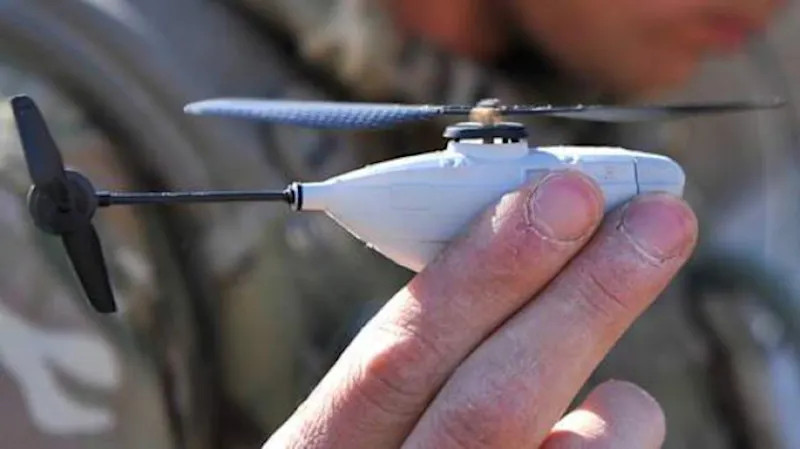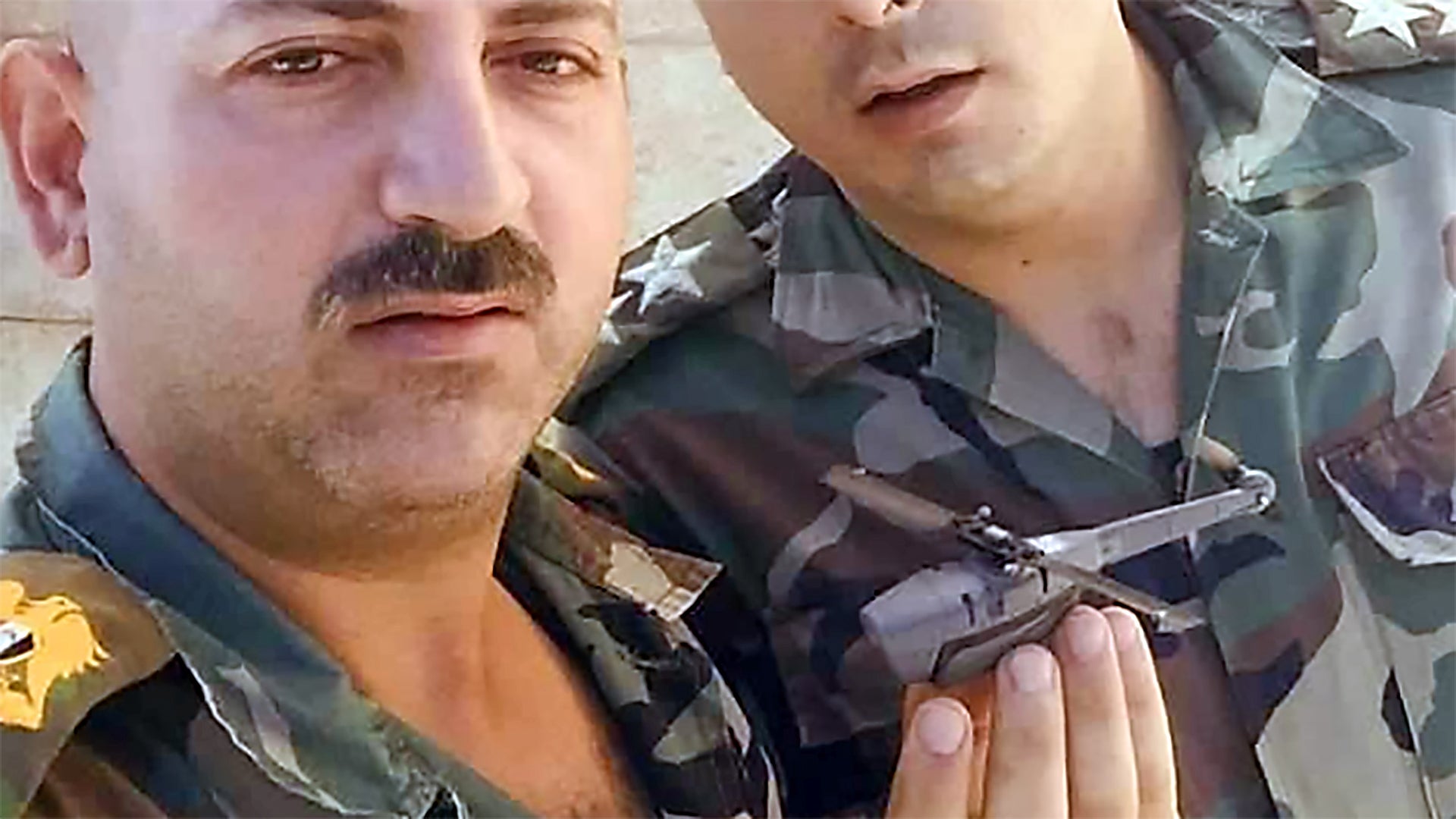A picture has emerged online reportedly showing members of the Syrian Arab Army holding a FLIR Systems Black Hornet 3 drone that they captured in the northeastern corner of the country. Variants of this pocket-sized helicopter drone have seen increasing use, including within the U.S. military, in recent years, as a way to give small units important added situational awareness without necessarily exposing their position or otherwise putting personnel at increased risk. You can read all about Black Hornet in this past article of ours.
This photograph first emerged online on July 19, 2020. Pro-regime social accounts claimed that Syrian troops recovered the Black Hornet near the town of Tal Tamr in the country’s northeastern Al Hasakah Governorate, which borders Turkey to the north and Iraq to the south. Forces aligned with Syrian dictator Bashar Al Assad, together with Russian troops, moved into this area in October 2019 after a unilateral Turkish intervention prompted American personnel and their local, predominantly Kurdish partners to vacate various operating bases and otherwise pull back.
The Black Hornet 3, also known as the Personal Reconnaissance System (PRS), is the latest in the Black Hornet series, which Prox Dynamics first put on the market in the early 2010s. FLIR Systems subsequently bought Prox Dynamics in late 2016.

The latest version of the tiny helicopter-like drone is fewer than seven inches long and weighs under a tenth of a pound. A single individual operates the Black Hornet using a tablet-like touchscreen device and a hand-held controller. Users fly the tiny unmanned aircraft primarily via a line-of-sight control link, but can also send it to specific locations further afield using a GPS-enabled beyond-line-of-sight navigation capability. In this mode, it can gather imagery along a route of preset waypoints and then return to its point of origin automatically.
Despite its size, it has two full-motion daytime video cameras and a thermal imager. While operating at night, the system fuses the feeds from all three cameras to provide a single, higher-fidelity view, making it easier for operators to identify potential threats and other objects of interest. The user can also grab still images using these cameras for further exploitation after the conclusion of an operation.
A typical PRS package consists of two drones inside a storage container that doubles as a docking station for recharging the battery-powered drones, along with the tablet and controller, all of which can easily fit inside one individual’s rucksack. FLIR system has also developed vehicle-mounted dock/launchers for up to eight Black Hornets.

It’s not clear who was operating the drone in Syria before the Syrian troops captured it, but last year the U.S. Army began issuing Black Hornet 3s to various units. U.S. special operations forces, who have been very active in Syria, along with supporting conventional elements, have also been using versions of the drones since at least 2015.
Various other members of the U.S.-led coalition fighting ISIS who are known to have special operations elements deployed in Syria, such as France, also operate or have operated variants of this drone, though it’s unclear whether any of them have sent Black Hornet 3s, specifically, to units in the country. For instance, the British Army first began using the first-generation Prox Dynamics PD-100 variant in 2013, but said it had withdrawn all of those from service between 2016 and 2017, in favor of larger, man-portable unmanned aircraft. In 2019, the U.K. Ministry of Defense announced it was buying 30 “Black Hornet PRS,” but officially for “research and development into a capability gap identified by Army HQ,” rather than operational use.

Regardless of who specifically was flying the drone, with a maximum stated range of under two miles, the recovery of the Black Hornet simply highlights just how closely the U.S.-led coalition is operating to the Syrian Army and its partners, chiefly Russia, on a day-to-day basis. In the past six months, there have been numerous alterations between American and Russian troops that run the risk of escalating into a more serious confrontation. This includes numerous instances where U.S. armored vehicles have blocked or attempted to block the passage of Russian convoys into certain areas, with vehicles dangerously jostling for position on the road at times.



With all this in mind, it’s not surprising that elements of the U.S.-led coalition, especially special operations units, would be using Black Hornets in northeastern Syria, where the lines separating areas under the control of a wide array of actors, which also include Turkish forces and their local Syrian partners and pockets of ISIS terrorists, can be extremely fluid. The drones are ideal for scouting ahead along a patrol route or for reconnoitering urban areas, as well as monitoring the perimeters of small bases, where they might be able to spot impending attacks, ambushes, and all sorts of other hazards.
As the Syrian conflict became increasingly internationalized over nearly a decade, it has also become a dumping ground of military hardware of sorts, and some of that hardware has been extremely advanced. For example, Israel’s loss of a Stunner surface-to-air missile, possibly the most advanced in the world, that careened undetonated into Syrian, and as a result, reportedly Russian hands. It’s also a conflict where drones have been omnipresent and especially small ones used for reconnaissance, pinpoint strikes, or even synchronized mass attacks. As Black Hornet underscores, these drones are only getting smaller and more capable.
If anything, the war in Syria points to a future where small drones will dominate conflicts of all types.
Contact the author: joe@thedrive.com
